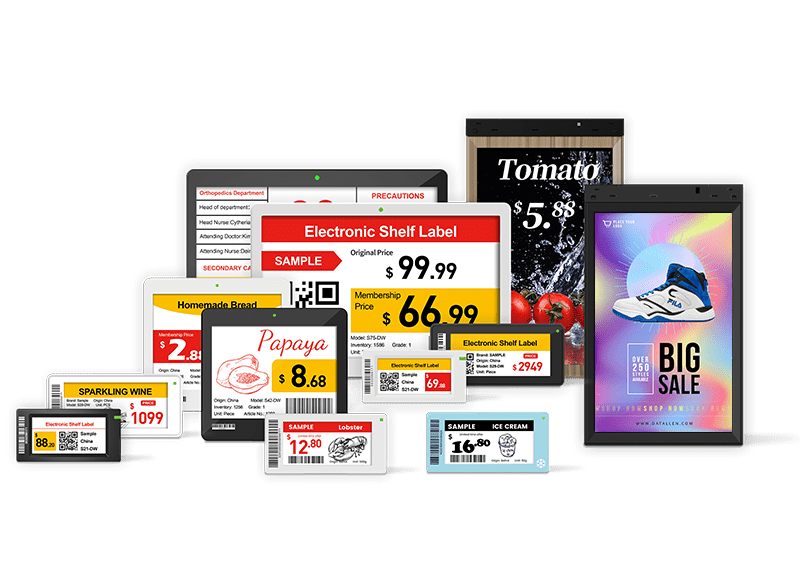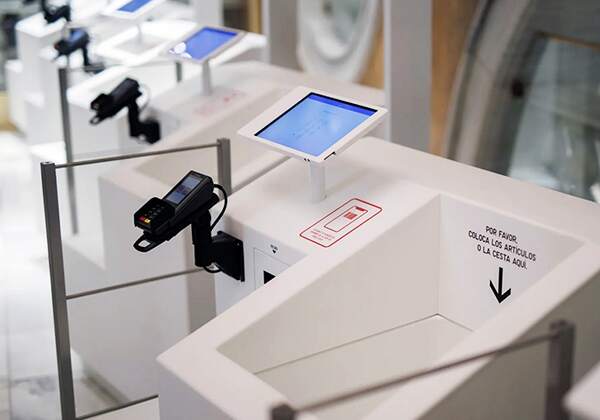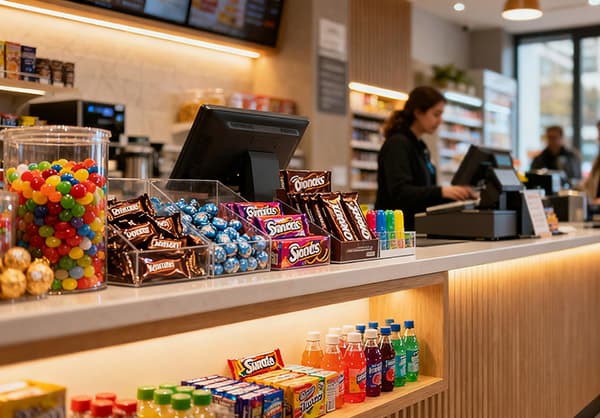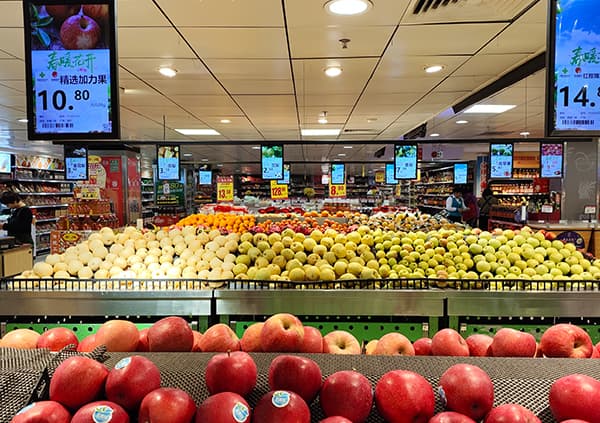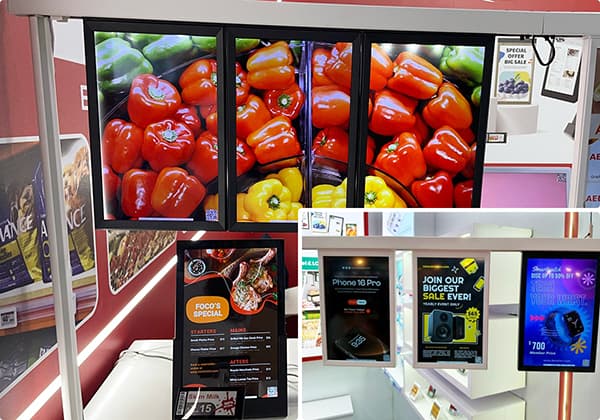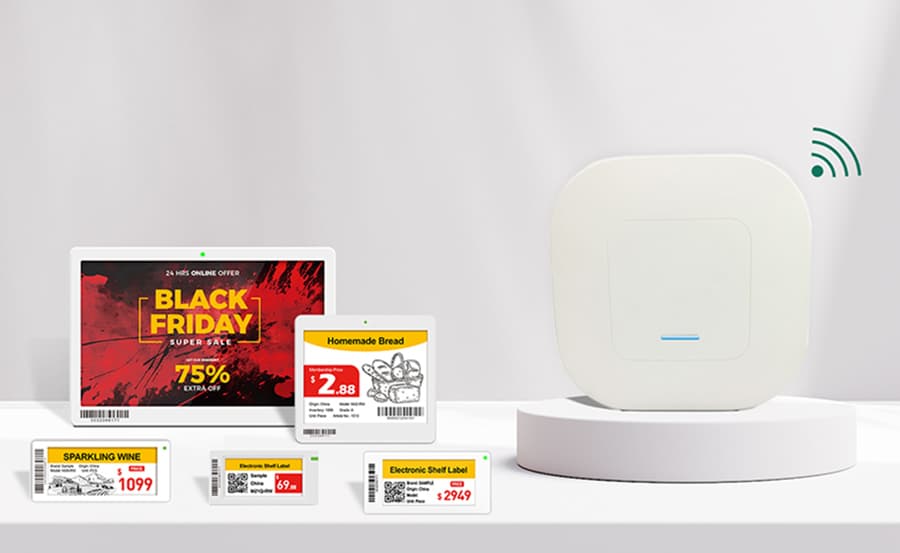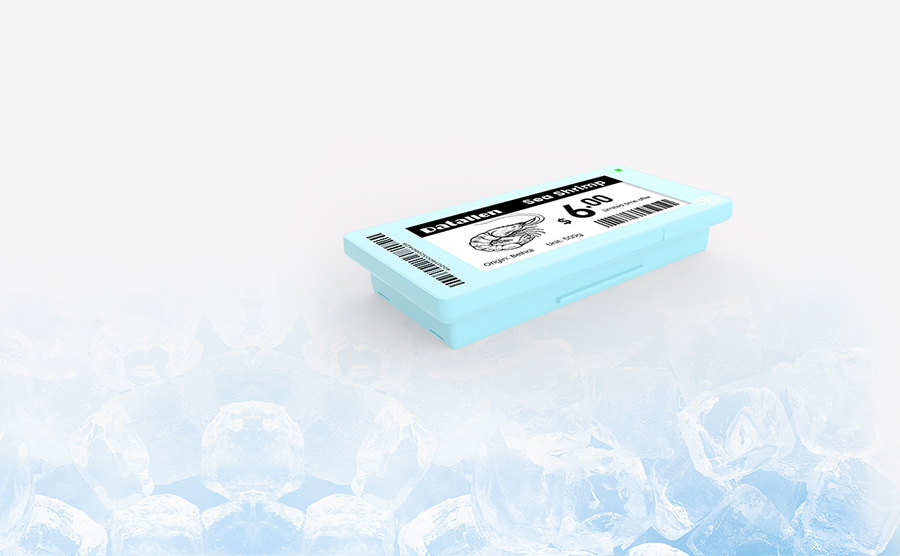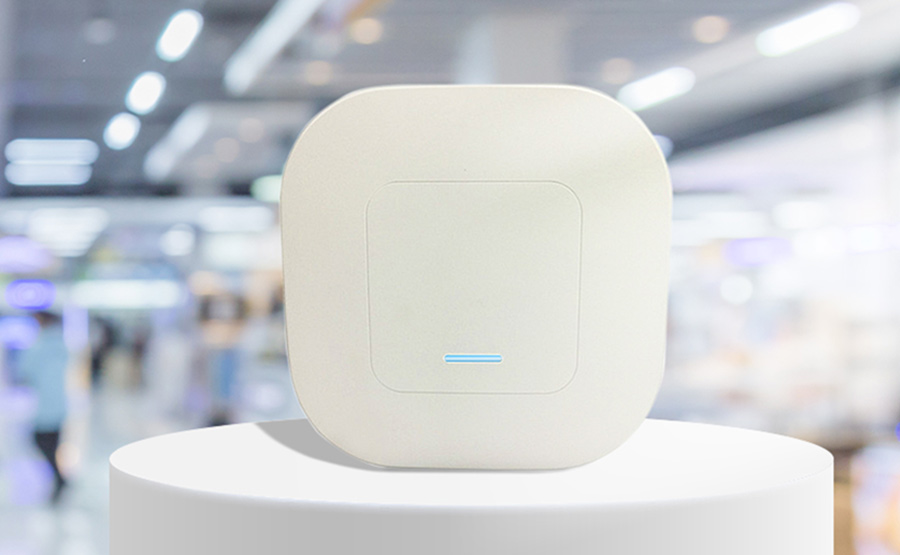From fitness clubs to adventure enthusiasts, the demand for quality sports supply store setups has never been higher. Retailers now face a critical challenge: how to present a wide range of products — like dumbbells, scooters, boxing gloves, backpacks, and tennis rackets — in a way that drives engagement, enhances the brand image, and maximizes operational efficiency.
Let’s explore how to build a smart, immersive, and scalable display strategy while integrating ESL solutions to address modern retail demands.
The Market Landscape and Shopper Behavior: Why Display Strategy Matters
Fueled by fitness trends, outdoor lifestyle movements, and post-pandemic wellness priorities, the global sports retail market is booming. In the U.S. and the Middle East, sports equipment shops are seeing rapid growth in both consumer interest and store footprint.
But modern shoppers are discerning. They care about:
Functionality: Is the product suited to their level and use case?
Price and brand comparisons
Hands-on experience: Can they try the scooter or grip the boxing gloves before buying?
With this shift, sports shop display strategy has evolved from basic shelf stocking to immersive, branded environments that blend layout science, digital interaction, and emotional resonance.
Zoning and Display Logic: Strategic Store Layout Design
Successful stores are structured around use-case zones:
Fitness Zone: Dumbbells, yoga mats, resistance bands
Combat Zone: Boxing gloves, punching bags, protective gear
Tennis and Racket Sports Zone: Rackets, balls, grips
Scooter & Outdoor Ride Zone: Scooters, helmets, pads
Accessories: Backpacks, hydration packs, wearable fitness tech
Here’s how smart retailers optimize their sports equipment shop display:
Place high-demand or high-impulse products (e.g., scooters, dumbbells) near the entrance
Position accessories like sports backpacks or gloves next to the main gear to boost cross-selling
Use color-blocking strategies such as “one model, multiple colors” or “same color, multiple variants” for visual consistency
Ensure “front-back” and “inside-out” visual coherence in layout, especially in smaller shops
Example for ball sports: Position basketballs, footballs, volleyballs in clear horizontal order. Then split vertically by material or price point.
Example for racket sports: Group badminton, tennis, and ping-pong gear together by usage, then vertically sort by price. This streamlines shopper decisions and enhances brand professionalism.
Linked Product Placement: Display tennis rackets beside balls, grips, and wristbands. Place sports shoes next to socks and insoles to encourage full-package purchases.
Rotation Strategy: Regularly shift inside products to the front, and switch combinations periodically to keep displays fresh without restocking entire shelves.
Visual Merchandising and Fixture Strategy: Bringing Products to Life
Modern sports equipment shop displays are increasingly immersive. Key techniques include:
Real-life simulation setups: Use punching bags to showcase boxing gloves, or display scooters in an urban street background.
Height variation: Combine low shelves, hanging hooks, and inclined displays for depth.
Interactive layouts: Allow customers to lift weights, test grip, or feel bag textures.

Integrating Datallen ESL Solutions:
Datallen ESLs can be installed on hooks, rails, tables, or even glass doors — aligning with any fixture type
Easily match the visual theme without cluttering the aesthetic
Enable “scene-based tagging,” e.g., boxing gloves shown with a QR code to demo videos or full training gear bundles
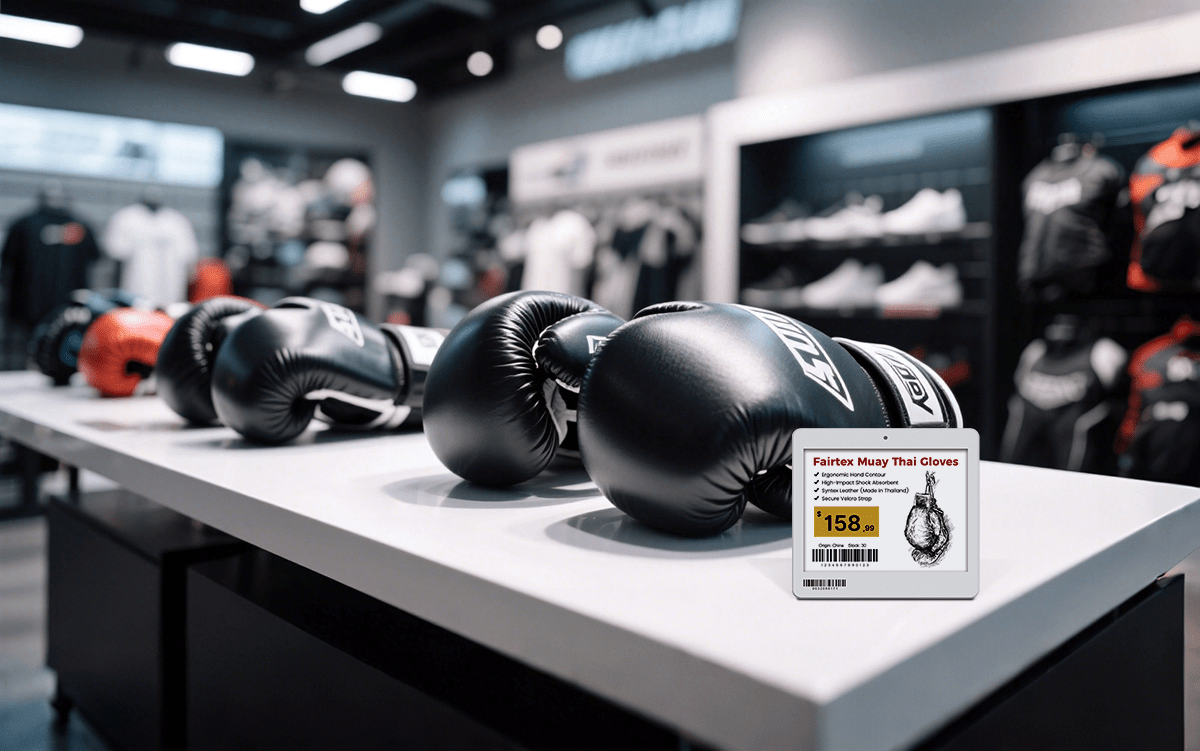
Highlight Promotions Dynamically:
Dedicated “Seasonal Picks” or “New Arrival” zones can use Datallen ESLs to switch between regular price, time-limited deals, or animated “SALE” icons in real-time — removing the need for manual tag changes
Educate and Upsell via Display:
For higher-end items like tennis rackets, Datallen ESLs can show product comparisons, skill level recommendations, or QR links to pro-use cases — helping consumers make confident decisions and reducing staff training burden
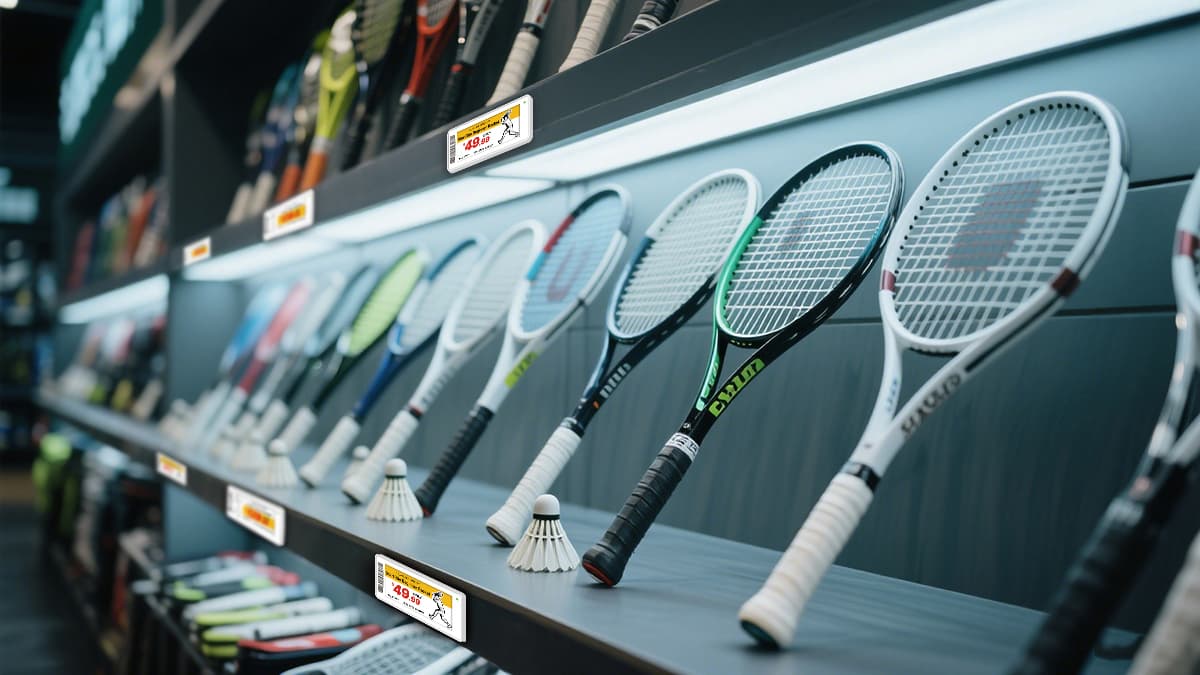
Information Delivery and Shopper Engagement: From Passive to Interactive
Price is just one part of the story. Shoppers today seek:
Technical specs (e.g., racket weight or dumbbell coating)
Use guidance (e.g., best scooter for 8-12 year olds)
Brand comparisons and trust cues
Promotions and bundle info
Traditional paper labels fall short — they’re time-consuming to update, prone to error, and clutter the space. Especially during sales events, staff waste valuable hours printing, cutting, and replacing tags.
Datallen’s ESL solution transforms this process:
Multi-screen display formats allow inclusion of price, spec, promos, and more — all in one sleek tag
Animations and template options allow real-time updates across all tags with a single click
Reduce pricing errors and elevate in-store communication transparency
This directly boosts shopper engagement and lowers retail labor costs.

Inventory and Store Management: Smart Retail, Centralized Control
Sports shops carry a wide range of SKUs with multiple sizes, models, and inventory variations. Managing all this manually is a nightmare — especially across multiple branches.
Challenges:
Label mistakes during peak sales seasons
Lag in price changes or promo rollouts
Difficulty in synchronizing between inventory and display pricing
Datallen solves this with full backend integration:
Syncs ESLs with POS, ERP, and warehouse systems
Any change in product price or stock triggers an immediate update on the tag
Multi-location management from a centralized dashboard
This means better pricing accuracy, lower staff burden, and faster reaction to promotions — critical for today’s fast-moving sports retail world.
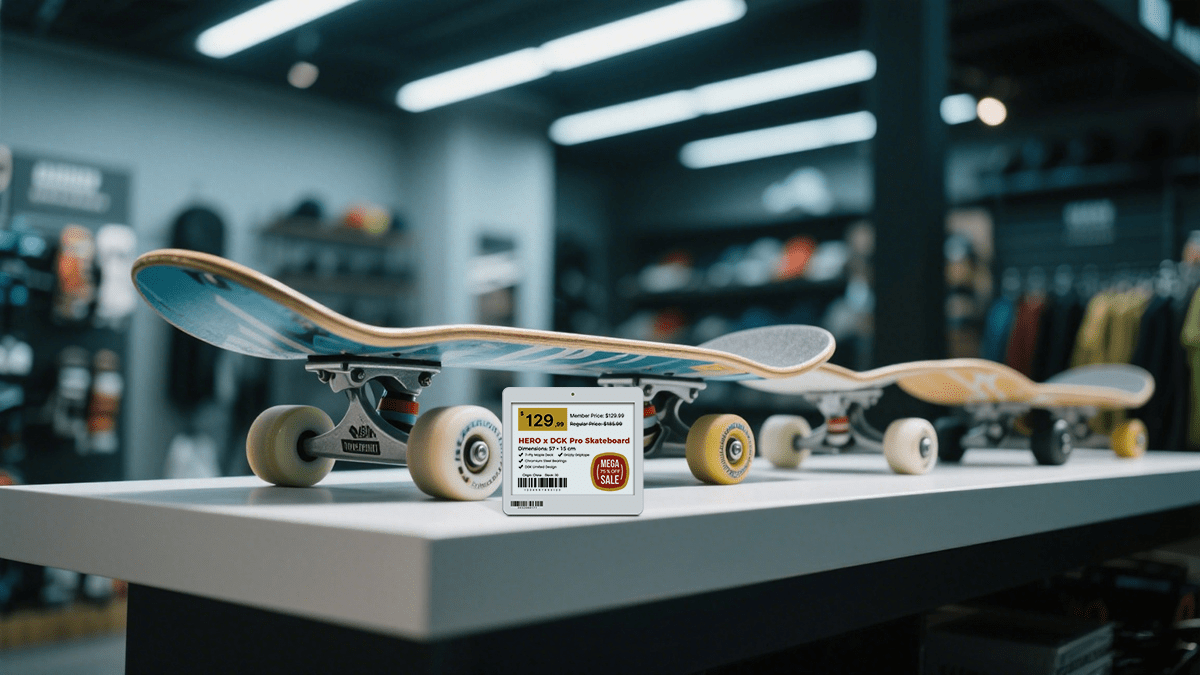
Sustainability and Digital Transformation: Building a Responsible Brand
Switching to ESL solutions like Datallen isn’t just about tech — it’s a step toward sustainable retailing:
Eliminates paper label waste
Reduces electricity and printer usage
Decreases manual labor costs
For brands focused on ESG compliance, this digital solution shows a strong commitment to green operations.
Beyond that, digital displays foster a professional and forward-thinking brand image, enhancing shopper trust and setting a standard in the sports supply store category.
Conclusion: A New Standard for Sports Equipment Shop Display
As the lines blur between retail and experience, successful sports equipment shop displays are no longer static. They’re smart, adaptive, and data-powered — creating a seamless flow from product to purchase.
For store owners, integrators, and sports retail professionals, this isn’t just a tech upgrade — it’s a smarter way to run a sports equipment shop in the digital era.
Discover more at https://www.datallen.com/electronic-shelf-labels/
For more insights, check out:
1. Electronic Labels vs. Manual Tags: Cost & Efficiency Analysis for Modern Retailers
2. Smart Shelf Technology-The Future of Inventory, Efficiency, and Green Retailing
3. How Retailers Can Use Window Display Ideas to Drive More Foot Traffic
4. What Makes a Smart Pharmacy Better with E Ink Price Tag?
5. Top Retail Dynamic Pricing Strategy Examples and Best Practices
6. How Much Will Electronic Shelf Labels Cost Your Business? What You Should Expect to Pay in 2025

